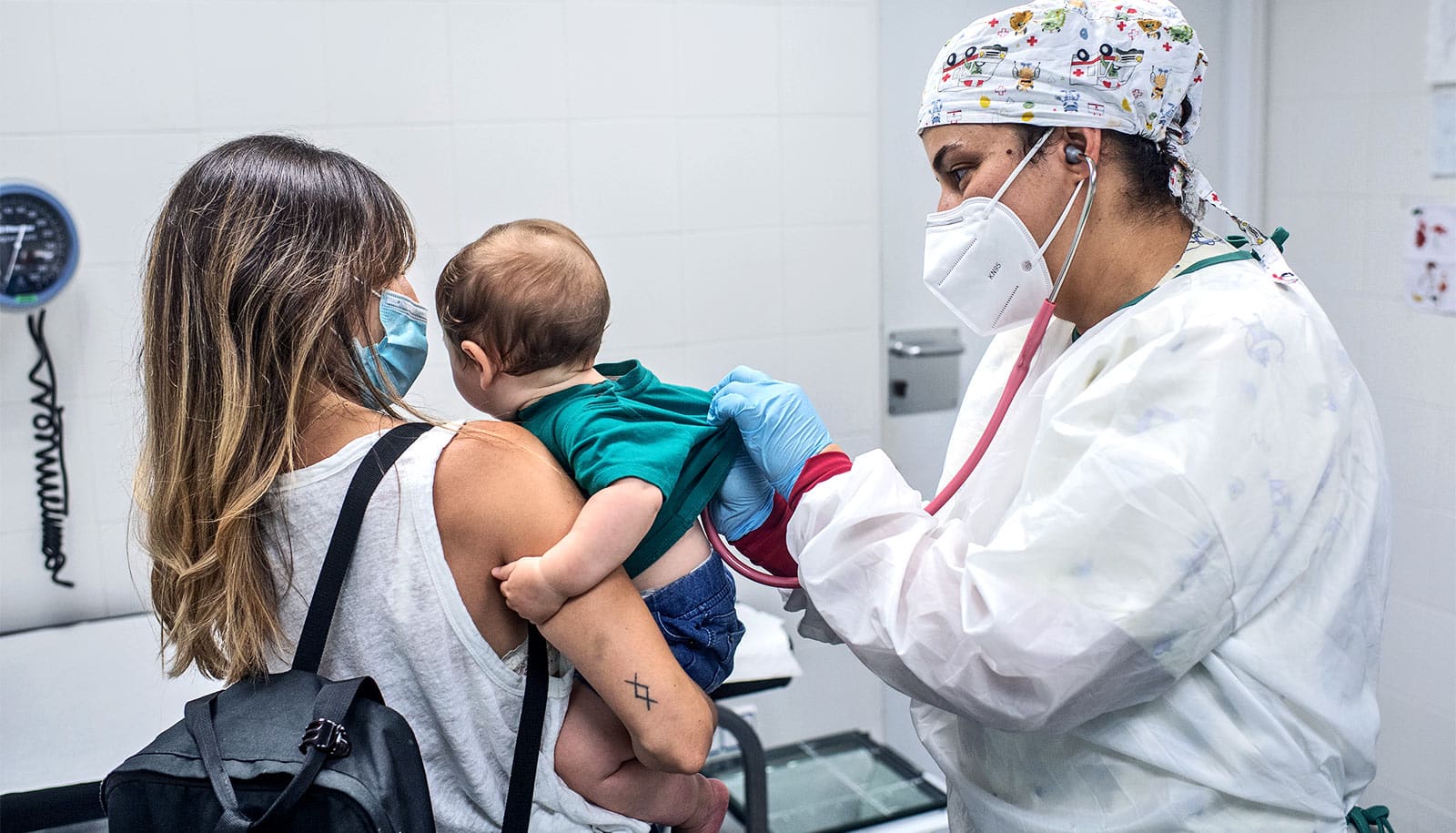
The researchers followed more than 2,000 women for three years after they delivered their first child. Above, primary health care pediatric nurse Vero Velez attends to a patient at the Sant Andreu de la Barca Primary Health Care Centre on June 2, 2020 in Sant Andreu de la Barca, Spain. (Credit: David Ramos/Getty Images )
Lower fertility may follow C-section for first baby
"It's important that women who elect to have a C-section know that there is a chance they may have difficulty conceiving in the future."
Those who deliver their first child by cesarean section are less likely to conceive a second child than those who deliver vaginally, despite being just as likely to plan a subsequent pregnancy, researchers report.
The researchers followed more than 2,000 women for three years after they delivered their first child.
Although previous studies showed that women who delivered by cesarean section (C-section) were less likely to bear subsequent children, it was unclear to researchers whether this was due to maternal choice or a lower rate of conception, says Kristen Kjerulff, professor of public health sciences at the Penn State College of Medicine.
Conception after C-section
The researchers followed women from before the birth of their first child and interviewed them every six months until three years after their first delivery. During each interview, they asked women to report how often they had unprotected intercourse in each of the previous six months.
The researchers analyzed data from 2,021 women between the ages of 18 and 35 who provided data on unprotected intercourse and resulting conceptions for three years after their first birth. Nearly 600 of those women delivered their first child by C-section and those women were more likely to be older, overweight and obese , shorter, and more likely to have sought fertility advice, testing, or treatment.
Approximately 69% of women who delivered by C-section conceived after unprotected intercourse compared to approximately 78% of women who delivered vaginally. Women who delivered by C-section also had a reduced likelihood of a live birth. The association remained after researchers accounted for maternal age, pre-pregnancy body mass index, time to conception of the first child, gestational weight gain, prior induced abortions, diabetes, hypertension, hospitalization during pregnancy, and other factors.
Could scarring be the reason?
Controlling for intercourse was a key strength of the study and allowed the researchers to rule out trauma or lingering pain from C-section, says coauthor Richard Legro, chair of the obstetrics and gynecology department at Penn State Health Milton S. Hershey Medical Center. Although the study didn’t investigate the reasons for the decreased conception rate, he suspects there may be some physiological reasons.
“It’s possible that pelvic or [fallopian] tubal scarring as a result of being exposed to open air and contaminants may affect subsequent attempts at getting pregnant,” Legro says. “It is also possible that scar formation from the surgical wound in the uterus, though not in an area where pregnancies implant, may have lingering effects on the process of implantation.”
Based on the findings from this study, Kjerulff and Legro recommend that women under 35 who fail to conceive after a year of unprotected intercourse following a C-section seek medical help. Legro notes the data from this study may be useful for physicians counseling women who elect to have C-sections.
“It’s important that women who elect to have a C-section know that there is a chance they may have difficulty conceiving in the future,” Legro says.
The research appears in JAMA Open Network . Funding for this study came from the Eunice Kennedy Shriver National Institute of Child Health and Human Development of the National Institutes of Health. The content is solely the responsibility of the authors and does not necessarily represent the official views of the NIH.
Source: Penn State
The post Lower fertility may follow C-section for first baby appeared first on Futurity .
Share this article:
This article uses material from the Futurity article, and is licenced under a CC BY-SA 4.0 International License. Images, videos and audio are available under their respective licenses.
Related Articles:
Living near oil or gas wells may up preterm birth risk
June 14, 2020 • futurity3D imaging tech captures labor contractions in real time
March 14, 2023 • futurityLinks/images:
- https://www.futurity.org/cesarean-section-rates-countries-1357472-2/
- https://www.futurity.org/cesarean-section-obesity-1061952-2/
- https://doi.org/10.1001/jamanetworkopen.2020.3076
- https://news.psu.edu/story/625239/2020/07/09/research/women-who-deliver-c-section-are-less-likely-conceive-subsequent
- https://www.futurity.org/c-section-conception-fertility-2400382/
- https://www.futurity.org


